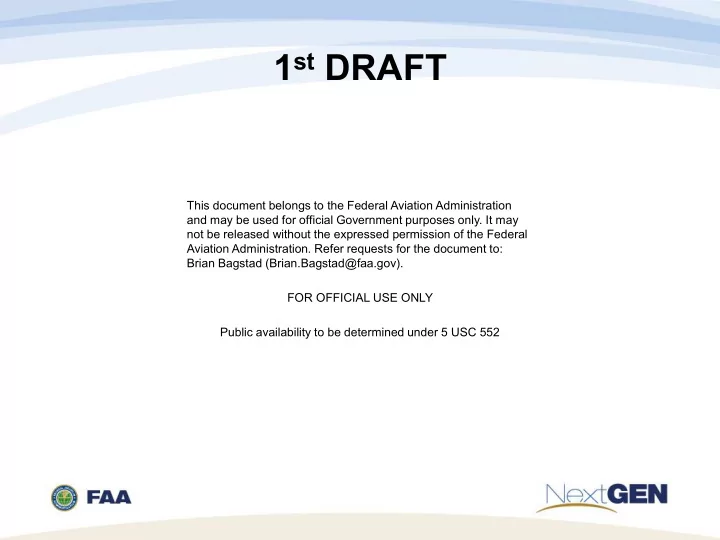

1 st DRAFT This document belongs to the Federal Aviation Administration and may be used for official Government purposes only. It may not be released without the expressed permission of the Federal Aviation Administration. Refer requests for the document to: Brian Bagstad (Brian.Bagstad@faa.gov). FOR OFFICIAL USE ONLY Public availability to be determined under 5 USC 552
Human Factors in System Development August 2015 Presented by Brian Bagstad, Senior ATO Representative Asia/Pacific Region Edmundo Sierra, Scientific & Technical Advisor for Human Factors
What is Human Factors? Human Factors Engineering (HFE) is a multidisciplinary effort to generate and compile information about human capabilities and limitations and apply that information to: equipment, systems, procedures, jobs, training, staffing, and software, and facilities organizational design, personnel management workspaces, and environments to produce safe, comfortable, efficient, and effective human performance. 3
What is the FAA’s policy for human factors in system development? 4
How do FAA organizations respond to the human factors policy? Human Factors Integration at the Enterprise Level Senior Human Factors Leadership at the Portfolio Level Human Factors Coordination at the Program Level 5
What infrastructure does the FAA have for human factors in system development? Human Safety Training Factors people, facilities, hardware, software, tools 6
What are the human factors funding requirements? Funding requirements High budget estimate is 10% of program Median budget estimate is 7% of program Lowest budget estimate is 2% of program Proactive cost estimate is less than reactive cost estimate 7
How are human factors system development activities in the FAA coordinated? 8
How does the FAA identify duplication or disconnect? Human Factors Integration Lead Cross-agency human factors coordination Facilitates collaboration of human factors input within FAA FAA Human Factors Subject Matter Expert Reviews programs to ensure that human factors issues are addressed early and throughout the system development process 9
How are cross-cutting human factors issues in system development addressed? Common Starting Point In any phase, FAA engineers benefit from using cross-cutting technical methods to determine feasibility, validate, and further define needed functions and requirements. Modeling The National Airspace System (NAS) Enterprise Architecture (EA) establishes the foundation Simulation from which evolution of the NAS can be explicitly Prototyping understood and modeled. 10
What mechanisms are in place to identify and resolve human factors risks? Programmatic Risk Safety Risk Risk Management is a standardized, continuous, System Safety Engineering is the application of and proactive process that identifies Risks, engineering and management tools—including Issues, and Opportunities, assesses and principles, criteria, and techniques—to optimize analyzes Risk, Issues, and Opportunities, and the safety of a system within the program’s effectively mitigates risks/issues, and leverages operational and programmatic constraints. opportunities, to achieve program/portfolio objectives. 11
How is the status of human factors work during system development known? In accordance with human factors guidance, status of- and feedback for human factors is provided by the Program’s Human Factors Coordinator and its Human Factors Working Group. 12
Recommend
More recommend